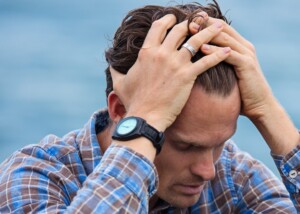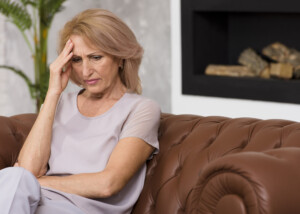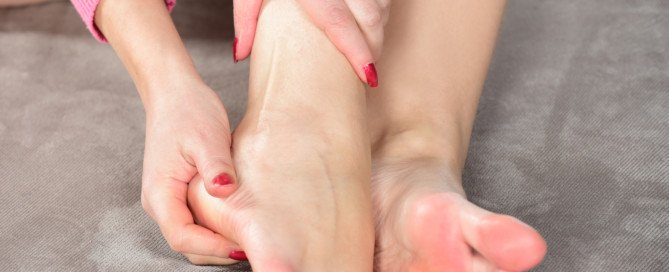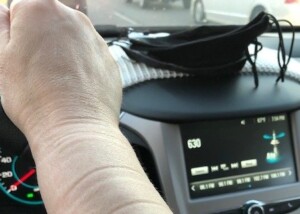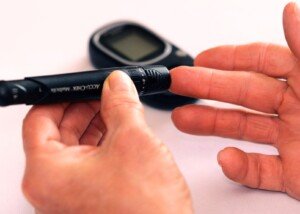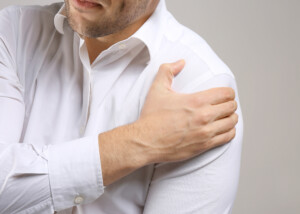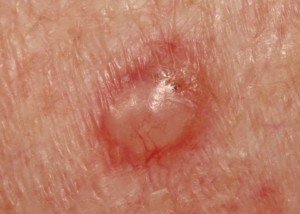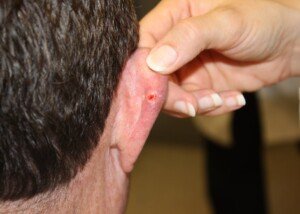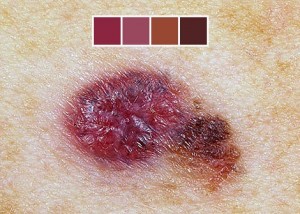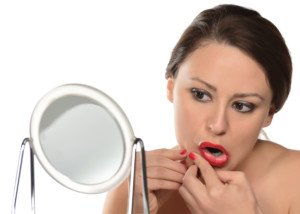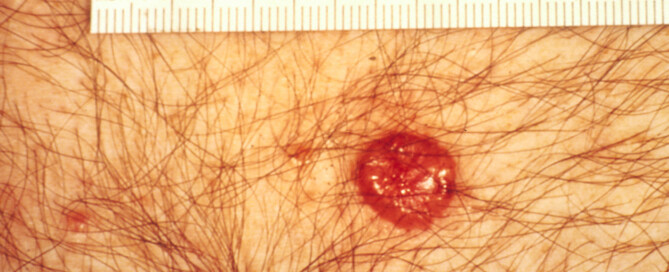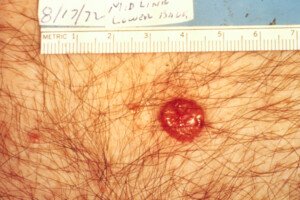Is It Safe to Lift Weights With a Headache ?

Is it safe to train with weights on a headache you got before the workout, and how about if the headache develops while you’re strength training?
Some Headaches Mean Danger While Others Are Harmless
“Headaches come in all shapes and sizes, and some are actually relieved with exercise,” says J. Mark Anderson, MD, DABFM, of Executive Medicine of Texas and who is board certified in family medicine.
I second that last statement, in that more than once, I’ve felt either complete relief or a reduction in a sinus headache—from lifting weights—that I had been getting on occasion due to a mild recurring nasal infection.
It’s certainly safe to lift weights with a sinus headache. The activity will not make the infection worse.
The issue is how tolerant you could be while lifting with a headache that you know is benign.
Dr. Anderson continues, “Exercise can be a natural pain reliever. However, there are times that headaches are an underlying symptom of a bigger problem.
“For example, headaches can be caused from high blood pressure. Since exercise, specifically weightlifting, can cause a temporary spike in pulse rate and blood pressure, it’s best to have high blood pressure under control before going to the gym.”
How many strength training enthusiasts are meticulous about macros, when to take their protein powder and other supplements…yet don’t even own a home blood pressure device?
Do you even KNOW your typical baseline blood pressure? The lower it is, the less high your blood pressure will spike during strenuous lifts.
“If headaches occur while at the gym, but tend to go away once exercise stops, it may be wise to have a VO2 max stress test with your healthcare provider,” says Dr. Anderson.
“This test will not only check your blood pressure during exercise, it will identify the amount of weight you can lift before having a change in blood pressure or pulse rate.
“As for other exercise, a VO2 max will identify the METS (stands for metabolic equivalent: a measurement of exercise intensity based on oxygen consumption) at which you effectively exercise, a number which varies for each person.
“Staying within the correct METS level will help keep exercise safe and effective.”
If you’re getting headaches only after you begin your weightlifting regimen, another possible cause is dehydration.
Dehydration can cause a headache even while one is inactive. When you start pumping iron, you sweat more (whether you realize it or not).
Don’t rely on the presence or absence of thirst as a hydration barometer.
Drink up before you begin your routine, and if a headache occurs at some point during the weightlifting, drink up again and see if it goes away.
If you have a severe headache before you step into the gym, it’s advisable to avoid weightlifting until it goes away.
Waiting it out will give you a chance to see if it’s something that needs urgent attention.
For instance, if you wait it out at home, and additional symptoms start developing (e.g., blurred vision, slurred speech), at least you’ll be in a better setting from which to be taken to the emergency room.
Yes, severe headache with any new-onset visual disturbance and/or speech difficulty means get to the ER. Have someone drive you there.
If while working out you experience a sudden-onset severe headache, like a clap of thunder, stop exercising immediately! In fact, the pain will be so striking that you’ll stop automatically.
Do not try to work through any severe sudden headache. And a thunderclap-caliber headache may be a burst blood vessel (aneurysm rupture) in your brain or carotid artery and requires immediate medical intervention.
Another possible cause of less painful headaches that arise during a workout is a nerve irritation from the exercise that affects the neck, shoulder or arm. The irritated nerve will radiate pain to the head.
If you’ve been diagnosed with migraine headache disorder, discuss with your physician guidelines for gym workouts.

Dr. Anderson is coauthor of the award-winning book, “Stay Young: 10 Proven Steps to Ultimate Health,” and host of the nationally syndicated Staying Young Show which goes to podcast as Staying Young Show 2.0.
 Lorra Garrick has been covering medical, fitness and cybersecurity topics for many years, having written thousands of articles for print magazines and websites, including as a ghostwriter. She’s also a former ACE-certified personal trainer.
Lorra Garrick has been covering medical, fitness and cybersecurity topics for many years, having written thousands of articles for print magazines and websites, including as a ghostwriter. She’s also a former ACE-certified personal trainer.
.
Top image: Shutterstock/Viktor Gladkov
You Hit Head, Have Lingering Dizziness: What Should You Do?

Does dizziness after hitting your head always mean you should head to the emergency room?
“Head injuries can be serious,” says J. Mark Anderson, MD, DABFM, of Executive Medicine of Texas and who is board certified in family medicine.
“If you injure your head and experience dizziness, fatigue, nausea or a change in vision, you should be evaluated immediately,” continues Dr. Anderson, who is board certified in internal medicine.
“In the event that you lose consciousness at any time during a head injury, it should be treated as an emergency.
“Concussions have gained a great deal of attention over the last decade, and for good reason.”
Imaging is Very Important
Dr. Anderson continues, “New imaging techniques, such as fMRI [functional MRI], have allowed researchers to see changes in brain activity after a head injury.
“We also now know that damage to the brain can be on a microvascular level, often not seen on routine scans.
“A healthcare provider can determine the best way to treat a head injury, and all head injuries should be a cause for concern.”
What if Your ONLY Symptom Is Dizziness After Getting Hit in the Head?
“Many people believe that dizziness after hitting the head is caused by ‘jiggling of the brain, which is close, but not exactly the case,” explains Dr. Anderson.
“Most dizziness after a hit to the head is actually caused by a disturbance in the inner ear.
“This dizziness is called vertigo and is a result of tiny crystals in the inner ear being disturbed.
“This often goes away on its own, but may require assistance from a healthcare provider.
“People who experience vertigo after a mild head injury often develop benign paroxysmal positional vertigo,” also known as BPPV.
“A technique called the Epley maneuver can often instantly reset the disturbed crystals.
“Mild vertigo is often not serious, but if vertigo persists or is followed by fatigue, nausea or the feeling of passing out, a proper evaluation by a healthcare provider is in order.”

Dr. Anderson is coauthor of the award-winning book, “Stay Young: 10 Proven Steps to Ultimate Health,” and host of the nationally syndicated Staying Young Show which goes to podcast as Staying Young Show 2.0.
 Lorra Garrick has been covering medical, fitness and cybersecurity topics for many years, having written thousands of articles for print magazines and websites, including as a ghostwriter. She’s also a former ACE-certified personal trainer.
Lorra Garrick has been covering medical, fitness and cybersecurity topics for many years, having written thousands of articles for print magazines and websites, including as a ghostwriter. She’s also a former ACE-certified personal trainer.
.
Top image: Shutterstock/9nong
Twitching in the Tiny Muscles of the Ankle Explained

Even the tiniest muscles are prone to twitching and this includes in the ankle.
Often, the arch or a single toe starts twitching, but the small muscles in the ankle joint may also act up from time to time for no apparent reason. (more…)
Permanent Dent in Arm from Resting It Against Desk
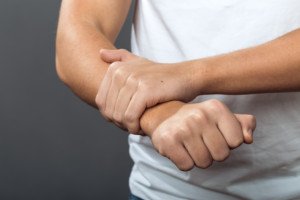
A dent in a limb is often associated with muscle atrophy in the mind of the layperson.
Somehow, someway, perceived or actual dents in the arm or leg have barged their way into the hypochondria realm.
Keep reading to be reassured that there is no basis for the assumption that a dent means muscle atrophy… (more…)
Fasting Glucose 109, Normal A1C: What Does this Mean?

A normal A1C is always good news, but what if it comes with a fasting glucose of 109, which is in the so-called prediabetic range?
“A fasting glucose is a snapshot of what someone’s blood sugar is at that exact moment,” begins J. Mark Anderson, MD, DABFM, of Executive Medicine of Texas and who is board certified in family medicine.
“It can show that someone has an increased risk of diabetes, but it’s not necessarily diagnostic,” continues Dr. Anderson.
“That is why many healthcare providers will routinely collect an A1C during a physical exam or if there is a concern about diabetes.
“An A1C is a blood test that looks at the amount of glycated hemoglobin (glucose bound to hemoglobin), giving a better long-term evaluation of your blood sugars.
“Generally, it paints the picture of your blood sugar over the past two to three months.
“It’s best to have an A1C of 5.6 or less. 5.7-6.4 is considered prediabetes and 6.5 or greater is considered diabetic level.”
Fasting Glucose of 109: What this Might Mean
As Dr. Anderson mentioned, the fasting glucose number reflects a snapshot in time, but this doesn’t mean you should kick it under the rug, either.
Years ago my fasting glucose was a little less than 109; it was 106.
The medical document said I had “impaired glucose metabolism,” even though I had not been given an A1C text.
This diagnosis was very premature. It sent me into a tizzy and I pursued more information via medical journals, where I learned that a fasting glucose can be elevated (prediabetic range) just from a single night of bad sleep, let alone many nights of poor sleep over a period of weeks.
Chronic anxiety can also boost fasting glucose numbers into the low 100’s.
It was no coincidence that I had gotten only a few hours’ sleep preceding the morning of my test, and that for the several weeks prior I had been struggling with sleep due to significant anxiety over a sick family member. The daytime stress added to the equation.
I’ve had many fasting glucose readings since, and all have been in the 80’s. My A1C tests have all been normal.
So if you have a fasting glucose (aka blood sugar) of around 109 but a normal A1C, this is no cause for worry.
However, consider it a wakeup call to your stress levels, sleep quality, dietary habits and exercise.
It’s tough to avoid stress and anxiety, but you should do all you can to choose your battles in life wisely rather than stress your mind out over trite matters.
Limit processed foods as much as possible and hit the gym hard.
A healthy diet and rigorous exercise will go a long way at preventing type 2 diabetes and an abnormal A1c.

Dr. Anderson is coauthor of the award-winning book, “Stay Young: 10 Proven Steps to Ultimate Health,” and host of the nationally syndicated Staying Young Show which goes to podcast as Staying Young Show 2.0.
 Lorra Garrick has been covering medical, fitness and cybersecurity topics for many years, having written thousands of articles for print magazines and websites, including as a ghostwriter. She’s also a former ACE-certified personal trainer.
Lorra Garrick has been covering medical, fitness and cybersecurity topics for many years, having written thousands of articles for print magazines and websites, including as a ghostwriter. She’s also a former ACE-certified personal trainer.
.
Top image: ©Lorra Garrick
Cramping in the Forearm Muscles: Can this Be Serious?
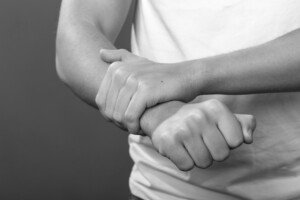
The muscles of the forearm are relatively small but can cramp up due to many causes.
The question is can this ever mean a serious condition?
How LONG Can You Have Skin Cancer Without Knowing It?

“Skin cancer can look like many things; therefore people can go long periods of time without recognizing that they have a skin cancer,” says Dr. Steven Musick, MD, a board certified dermatologist who runs Musick Dermatology, LLC, in Swansea, IL, which provides state-of-the-art medical and surgical care for all disorders of the skin, hair and nails. (more…)
How Long Does It Take Melanoma to Grow to 2 Millimeters?
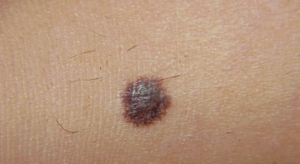
It’s a fact that melanoma can be well under six millimeters, and in fact, can be only one millimeter in diameter.
The ABCD rules for melanoma certainly do not apply to all such skin cancers. (more…)
Can Melanoma Patients Live More than 30 Years?
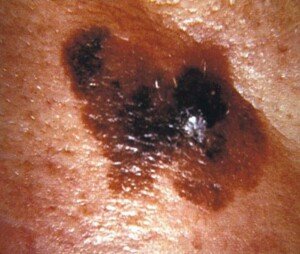
How many people walking around today were diagnosed with melanoma 30 years ago?
This deadly skin cancer is on the rise, but is highly curable when caught at the stage 0 or “in situ” (in place) stage. (more…)
Can People Ever Smell Skin Cancer?
Have you been sniffing at that strange mole or patch on your skin to see if you could smell something odd that might mean cancer?
Melanoma produces a distinctive odor that some dogs can detect. But can a person? (more…)


